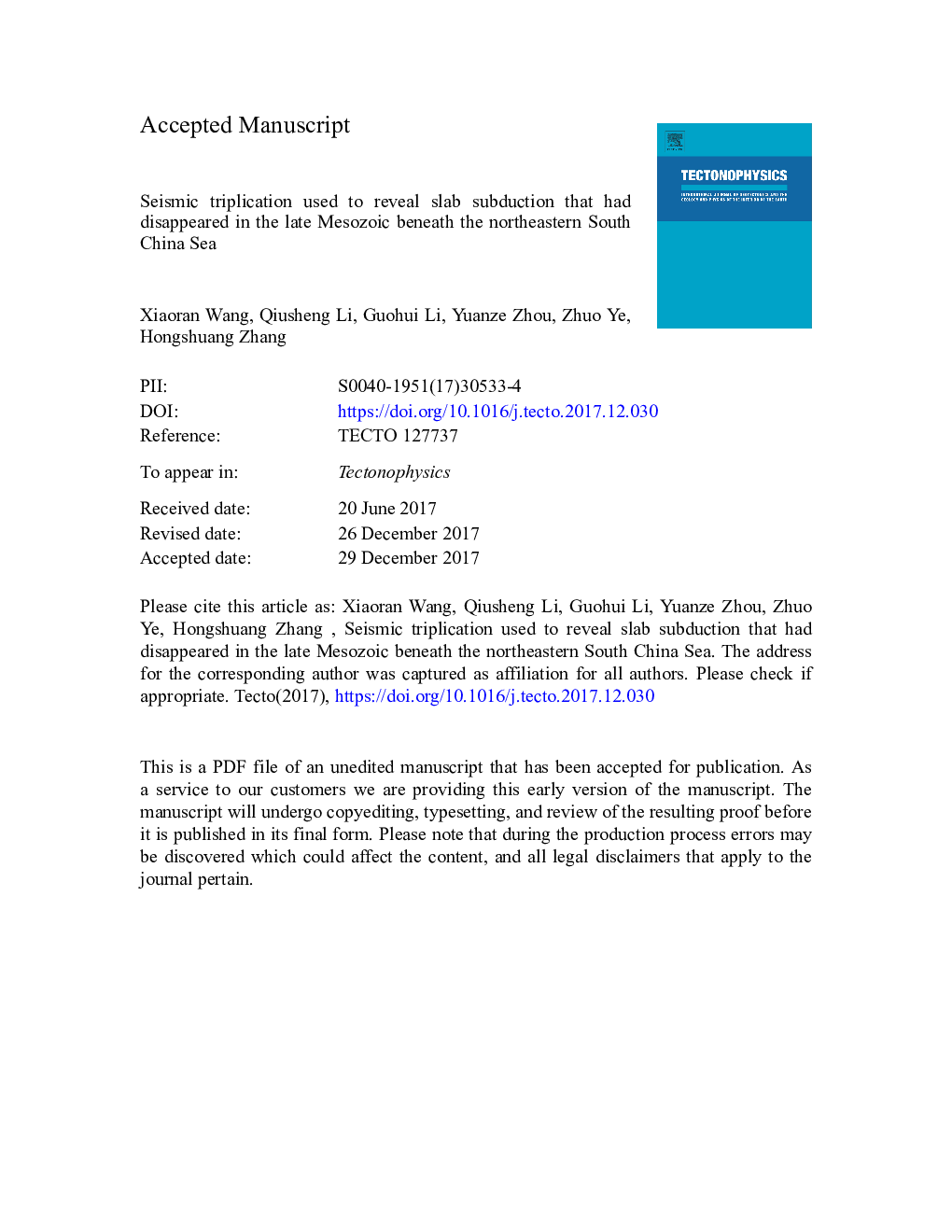| Article ID | Journal | Published Year | Pages | File Type |
|---|---|---|---|---|
| 8908744 | Tectonophysics | 2018 | 41 Pages |
Abstract
We provided a new study of the seismic velocity structure of the mantle transition zone (MTZ) beneath the northeastern South China Sea using P-wave triplications from two earthquakes at the central Philippines recorded by the Chinese Digital Seismic Network. Through fitting the observed and theoretical triplications modeled by the dynamic ray tracing method for traveltimes, and the reflectivity method for synthetic waveforms using grid-searching method, best-fit velocity models based on IASP91 were obtained to constrain the P-wave velocity structure of the MTZ. The models show that a high-velocity anomaly (HVA) resides at the bottom of MTZ. The HVA is 215Â km to 225Â km thick, with a P-wave velocity increment of 1.0% between 450Â km and 665Â km or 675Â km transition and increase by 2.5-3.5% at 665Â km or 675Â km depth. The P-wave velocity increment ranges from approximately 0.3% to 0.8% below the 665Â km or 675Â km. We proposed that the HVA in the MTZ was caused by the broken fragments of a diving oceanic plate falling into the MTZ at a high angle, and/or by unstable thick continental lithosphere dropping into the MTZ sequentially or almost simultaneously.
Keywords
Related Topics
Physical Sciences and Engineering
Earth and Planetary Sciences
Earth-Surface Processes
Authors
Xiaoran Wang, Qiusheng Li, Guohui Li, Yuanze Zhou, Zhuo Ye, Hongshuang Zhang,
